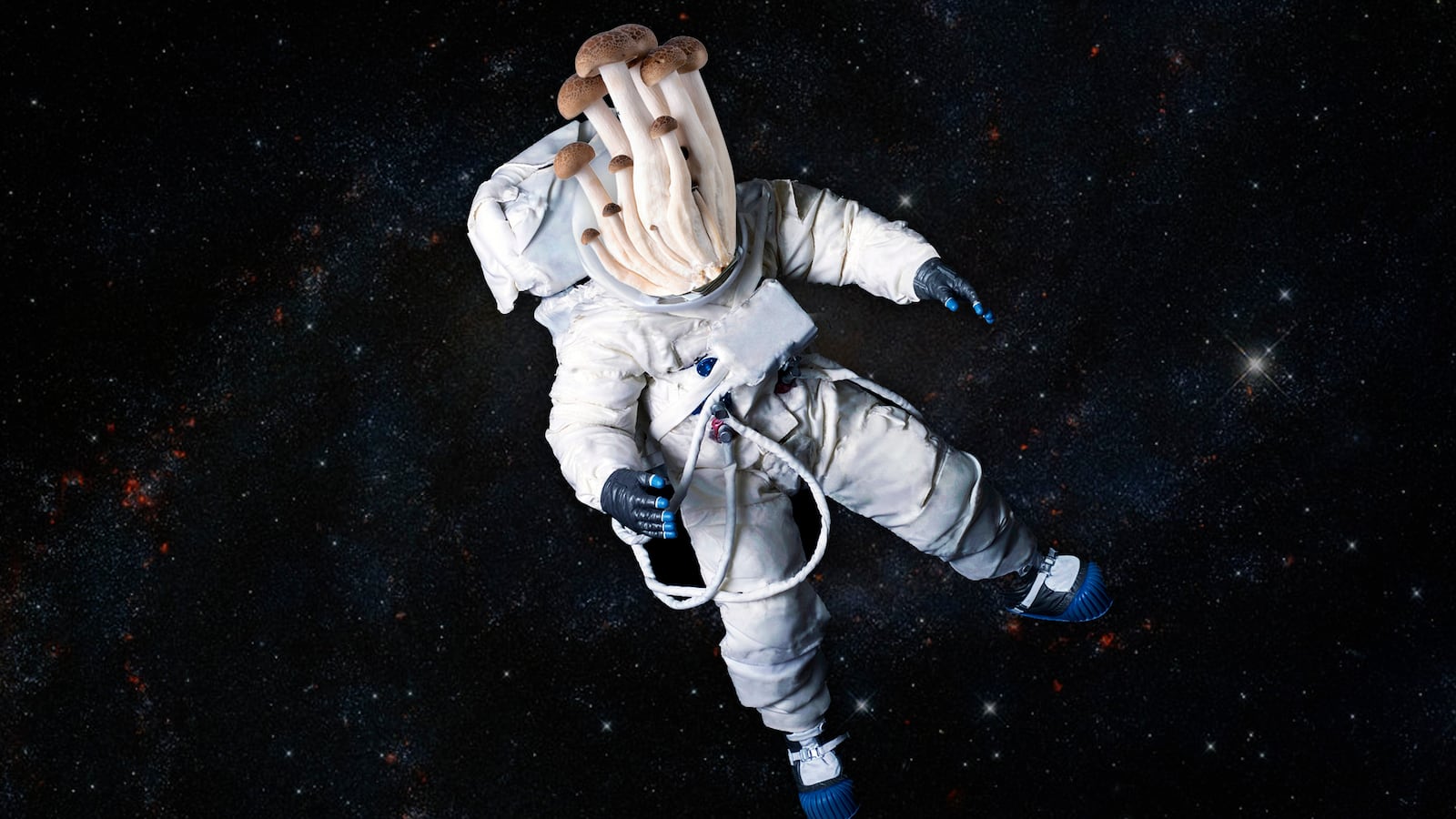Humans are bags of fragile bones and organs that need to be kept in precisely the right conditions to flourish. But we push at the limits of those conditions all the time, daring to see how far we can go: the hottest, the coldest, the lowest, the highest we can bear, using our ingenuity to design ways to survive.
Fungi doesn’t need to be so clever. Some fungi can survive in extreme temperatures and without oxygen.
They can lie dormant and wait for the right conditions to wake up, warm up, spread. They can grow in soil, in wood, on plastic, on pollution. Why wouldn’t they be able to survive space?
We already know that they can – at least, within the confines of human-built space stations, where many types of fungi have successfully grown, sometimes in a monitored capacity as part of experiments to ascertain the viability of different kinds of life in those conditions, and sometimes . . . not.
Mir, the first modular space station, was built in low orbit around the Earth in 1986 – what a feat of science and engineering – and it operated as a research laboratory until its orbit decayed in 2001. In my mind, when I think of it, I picture Mir as a perfect, clean environment, innovative and experimental. But this was not so; those who visited Mir commented on first being hit by the smell. British chemist Steve Pearce described it as a mixture of sweaty feet, nail-polish remover, body odor and vodka, among other things. He later attempted to recreate the smell as part of a NASA experiment. This unique scent could be due, in part, to the stowaways on board Mir that came as a shock to the astronauts: bacteria and fungi, found living happily behind panels, on spacesuits, on cables and around window frames. The discovery led to a flurry of news articles at the time. If you ever wondered if fearmongering in the media has extended to fungi, then take a look back at the BBC News article of Thursday, 8 March 2001, entitled ‘Mutant Fungus from Space’. All it lacks is an exclamation mark or two to turn it into a 1950s science-fiction movie. With Mir about to return to Earth, the article moots the idea that the fungi on board will have mutated to the point where they can do "serious damage to humanity."
The International Space Station, first launched in 1998, has had similar fungal issues, and study suggests that those fungi with high quantities of melanin thrive in space-station conditions, being better suited to resist high radiation levels. The genera of fungi that have been found surviving in the ruins of the reactor of Chernobyl, such as Cladosporium, have also been discovered on board the ISS, along with Penicillium and Aspergillus. The possibility of mutation, caused by the effect of radiation, remains under investigation, although the real area of concern continues to be fungi that can survive outside craft, exposed to open space, rather than within the human-friendly confines of a space station. An organism that grows over solar panels, say, or gets into the exterior sections of a multi-million-dollar craft, to cause havoc right in those very places that cannot be reached without extreme difficulty, could jeopardize the future of space travel.
This is not purely a theoretical area of concern. There are fungi that, amazingly, survive in open space. A 2009 Russian experiment into space exposure called Biorisk revealed that both Aspergillus versicolor and Penicillium expansum underwent changes while exposed for seven months that helped them to survive, increasing their layers of melanin to resist radiation.
If a space station makes for happy fungi, and even open space doesn’t necessarily present a problem, then where next? NASA has been investigating the possibility of using mycelia to create living shelters on Mars using melanin-rich fungi to absorb radiation and protect the human inhabitants within. If mycelia can create strong, flexible structures on Earth then they might well offer such possibilities elsewhere, and they could be constructed, effectively grown, on location, making them easier to transport. They also offer the proposal of easy, organic disposal after use, putting little strain on the alien environment.
A mycelial home on Mars – a magnificent achievement for both man and fungi, if the success of a species lies in its ability to adapt to the most challenging of conditions. We have both done just that: we erupt from our planet, in our rockets, with our plans. We are both destined to spread. And we will, eventually and inevitably, decay.

Excerpted from The Secret Life of Fungi: Discoveries From a Hidden World by Aliya Whiteley (Pegasus Books).

